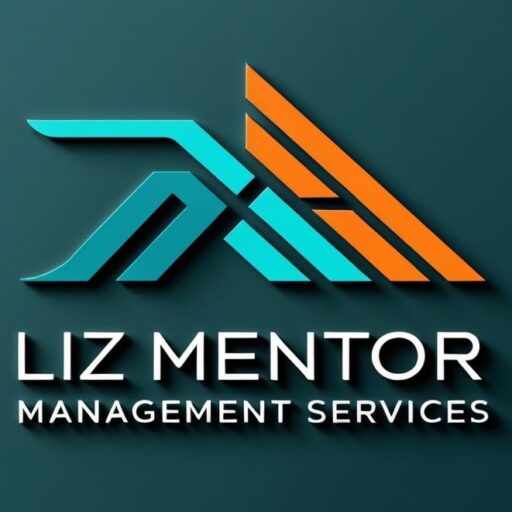Critical Thinking in Business – Making Smarter Decisions Every Day
In today’s fast-paced business environment, information is abundant, yet decisions are more complex than ever. Critical thinking in business is the skill that allows professionals to navigate ambiguity, evaluate options, and make decisions that positively impact the organization. Critical thinking dives deep into the process of critical thinking, equipping participants with tools to ask the right questions, organize data effectively, evaluate information objectively, and make sound business decisions.
Critical thinking isn’t about questioning everything for the sake of doubt—it’s about cultivating clarity, discernment, and judgment in every aspect of business. It’s the bridge between knowledge and action, turning raw data into meaningful decisions.
Why Critical Thinking Matters
Every decision, from choosing a new software system to investing in staff development, carries potential risks and rewards. Poor decision-making often stems from cognitive biases, incomplete information, or rushed analysis. Critical thinking, therefore, becomes a safeguard against costly mistakes, helping professionals to:
Recognize assumptions and challenge them when necessary.
Evaluate multiple perspectives before reaching a conclusion.
Anticipate the potential impact of decisions on the organization.
Maintain alignment with strategic goals and long-term vision.
By fostering critical thinking, organizations cultivate employees who do more than follow procedures—they actively contribute to smarter, more informed decision-making.
Asking the Right Questions: The Foundation of Critical Thinking
Effective critical thinking begins with asking the right questions. Questions guide inquiry, uncover hidden assumptions, and illuminate alternative perspectives. For example, instead of asking, “Why did sales drop last quarter?” a critical thinker might ask:
Which specific products experienced the decline, and why?
Are there external factors, such as market trends or competitor activity, influencing sales?
What internal processes or decisions contributed to the outcome?
What assumptions am I making about the data?
This approach moves beyond surface-level explanations and encourages deeper analysis. Asking precise, targeted questions ensures that decisions are rooted in a thorough understanding of the situation.
Organizing the Data: From Chaos to Clarity
Once questions are established, the next step is organizing information. Businesses generate vast amounts of data daily—from financial reports to customer feedback, employee performance metrics, and market research. Categorize and structure this information, enabling clear interpretation and actionable insights.
Key practices include:
Identifying relevant data points versus distractions.
Grouping related information to reveal patterns and trends.
Visualizing data through charts, graphs, or dashboards to simplify complex information.
Comparing historical data to current metrics for context and perspective.
By organizing data systematically, professionals reduce the risk of oversight and can see the broader picture, rather than being overwhelmed by raw numbers.
Evaluating Information: Separating Signal from Noise
With data organized, the next step is evaluation. Critical thinkers assess the credibility, relevance, and accuracy of information before making decisions. This process includes:
Checking sources for reliability and potential bias.
Verifying facts against multiple references.
Considering both quantitative metrics and qualitative insights.
Evaluating short-term versus long-term consequences.
Evaluation is not about skepticism for its own sake; it’s about ensuring that decisions are grounded in reality and not influenced by assumptions, hearsay, or incomplete information.
Making Decisions: Turning Analysis into Action
The ultimate goal of critical thinking is effective decision-making. This equips participants with strategies to translate analysis into action confidently. This involves:
Weighing the pros and cons of each option.
Considering risk tolerance and organizational priorities.
Consulting relevant stakeholders when necessary.
Implementing the chosen course of action with a clear plan and measurable outcomes.
Critical thinking ensures that decisions are deliberate rather than reactive. It encourages leaders and employees to take ownership of choices, anticipate potential challenges, and adapt when circumstances change.
Case Study: Applying Critical Thinking in Action
Consider a company experiencing a sudden drop in customer satisfaction scores. A reactive approach might involve sending a generic survey or offering discounts to appease clients. However, a critical thinking approach would involve:
Asking the right questions: Which services are underperforming? Are there specific customer complaints driving dissatisfaction? Are competitors providing better solutions?
Organizing data: Analyzing customer feedback, service response times, and employee performance metrics to identify patterns.
Evaluating information: Determining whether complaints stem from systemic issues, isolated incidents, or external factors.
Making decisions: Designing targeted interventions, such as staff retraining, process adjustments, or technology upgrades, and measuring outcomes to ensure improvements.
This structured approach leads to sustainable solutions rather than temporary fixes, demonstrating the value of critical thinking in real-world business scenarios.
Developing a Culture of Critical Thinking
Critical thinking is not just an individual skill—it’s a cultural asset. Organizations that encourage employees to question assumptions, analyze data rigorously, and challenge conventional wisdom foster innovation and resilience.
Practical steps to embed critical thinking in the workplace include:
Encouraging open discussion and diverse viewpoints.
Rewarding thoughtful analysis and problem-solving.
Providing training and resources to improve analytical skills.
Modeling critical thinking behaviors at all levels of leadership.
When critical thinking becomes part of an organization’s DNA, employees are empowered to make better decisions, solve problems creatively, and drive long-term success.
Beyond the Numbers: Integrating Business Acumen
Critical thinking complements financial literacy and business acumen by connecting analysis with strategic thinking. Understanding numbers is crucial, but the ability to interpret their implications, challenge assumptions, and make informed decisions elevates professionals from competent operators to strategic contributors.
For example, an employee who can read a balance sheet and income statement but lacks critical thinking skills may miss opportunities for improvement or fail to anticipate risks. By integrating both financial literacy and critical thinking, individuals gain a holistic understanding of business operations and decision-making.
Conclusion
Critical thinking in business is not optional—it is essential for professionals at every level. Critical Thinking empowers participants to ask insightful questions, organize and evaluate data, and make informed decisions that drive organizational success.
By cultivating critical thinking skills, employees become strategic thinkers who anticipate challenges, seize opportunities, and contribute to sustainable growth. The ability to analyze, evaluate, and act confidently transforms knowledge into action, ensuring that every decision made is deliberate, informed, and impactful.
Critical thinking, paired with financial literacy and business acumen, equips professionals to navigate the complexities of modern business, improve outcomes, and create value for their organizations. It’s the skill that turns good professionals into indispensable business leaders.



